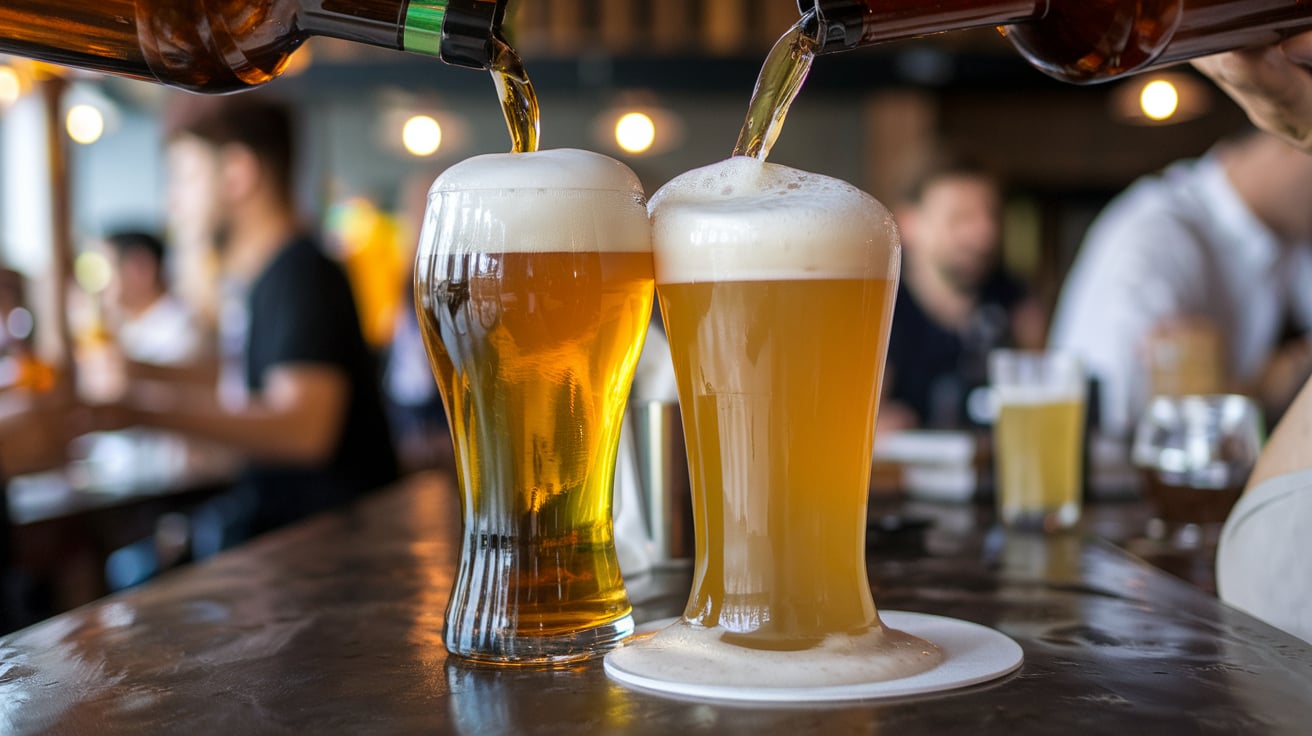When it comes to enjoying a cold beer, there’s more to it than just cracking open a can or tapping a keg. The pour—yes, that simple act of transferring beer from container to glass—plays a critical role in how your drink looks, tastes, and feels. You might think, “Hey, it’s just beer. Why make a fuss?” But the science behind the perfect beer pour is fascinating, and it turns out, it’s all about physics, chemistry, and just a bit of practice.
So, let’s break down the science behind the perfect pour, why it matters, and maybe crack a few jokes along the way.
1. Why Pouring Beer Properly Even Matters
Let’s start with the basics: Why bother with a proper pour in the first place? Can’t we just dump the beer in the glass and call it a day? Well, not exactly. The way you pour beer affects a few important aspects:
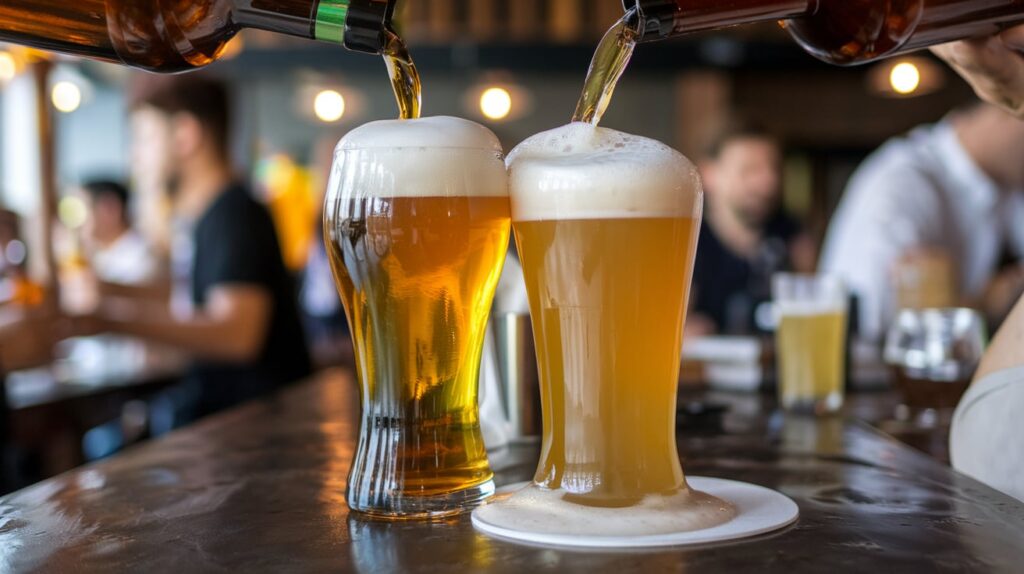
- Foam (Head): That fluffy white foam on top of a beer isn’t just for looks; it serves a real purpose. The foam releases aroma compounds from the beer, which enhances the overall flavor. Without it, you’re missing out on half the sensory experience!
- Carbonation: The bubbles in beer are carbon dioxide (CO2) dissolved in the liquid. Pouring beer the wrong way can either lead to too much carbonation (making the beer gassy and bloated) or too little carbonation (making it flat and lifeless).
- Aroma and Flavor Release: A good pour helps release the aromas and flavors trapped in the beer. Aromas play a significant role in taste, and a bad pour can suppress them. Imagine drinking beer through a straw, where you taste the beer but miss out on the glorious smells—like having pizza without the cheese. It’s just wrong!
2. The Physics of Beer Bubbles
To understand the perfect pour, you need to grasp the simple but magical physics of bubbles. When beer is stored in a keg, bottle, or can, it’s pressurized, which forces CO2 to dissolve into the beer. When you open the container, the pressure is released, and the CO2 starts escaping in the form of bubbles.
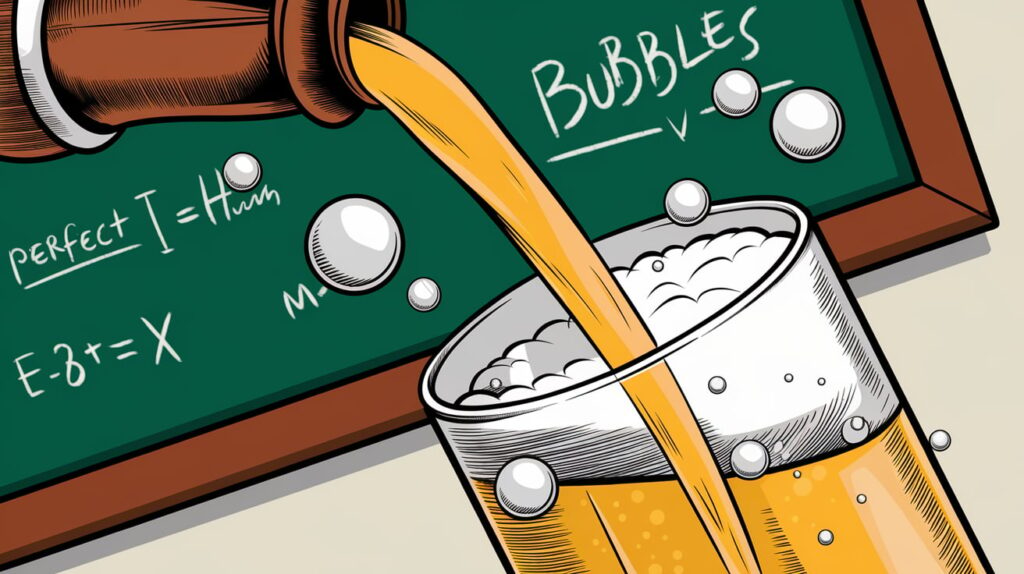
Here’s where things get interesting: When you pour beer too quickly, you cause the CO2 to escape too fast, creating a giant head of foam that overflows your glass and your patience. On the other hand, if you pour it too gently, the bubbles don’t form properly, and the beer stays over-carbonated inside the glass, giving you that unpleasant bloated feeling after a few sips.
Think of it like soda: If you shake a can of soda and open it, you get a foamy explosion. Pour beer the wrong way, and you get a similar disaster (though admittedly more tragic because, well, it’s beer).
3. The 45-Degree Angle: The Holy Grail of Pouring
So how do you pour the perfect beer? The answer lies in geometry—specifically, the 45-degree angle. Here’s the step-by-step process:
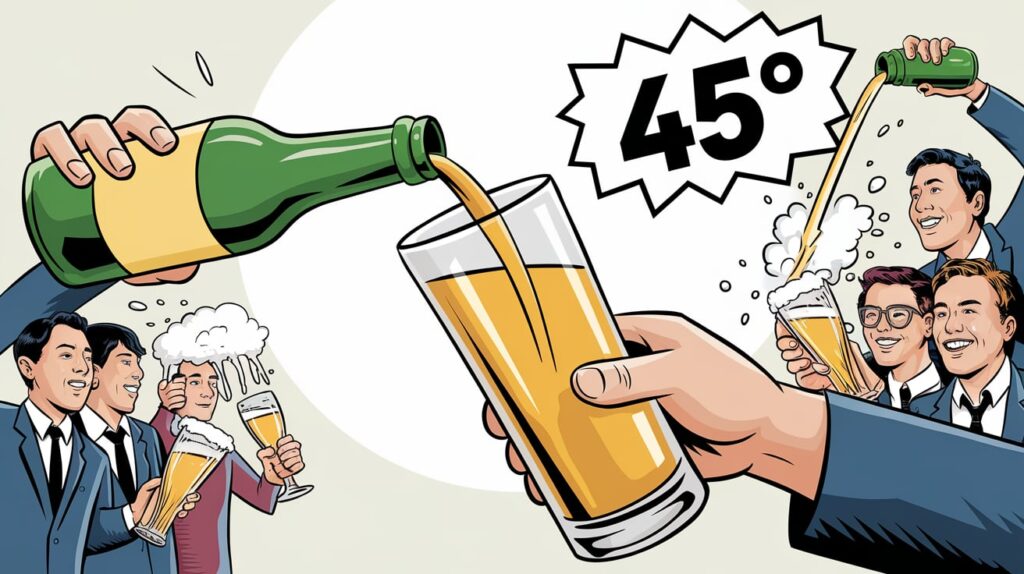
- Tilt the glass to a 45-degree angle. This reduces the surface area the beer hits, allowing a gentle, controlled release of CO2 and forming the right amount of foam. Pouring too quickly into a vertical glass will just turn your beer into a foam volcano.
- Pour slowly down the side of the glass. As the glass fills up, gradually straighten it until it’s vertical.
- Leave room for the head—aim for about an inch or two of foam at the top. This isn’t just for aesthetics. A properly foamed beer actually tastes better because the foam helps release the beer’s aromas.
If you’ve ever wondered why bartenders pour with that fancy angle, it’s not just to look cool (though that’s a bonus). They’re managing the flow of CO2 and making sure you don’t end up with either a glass of pure foam or a flat, lifeless brew.
4. The Role of Temperature
Another important factor in the perfect pour is temperature. The temperature of both the beer and the glass can greatly affect how it pours. Here’s a fun fact: The warmer the beer, the more CO2 escapes during the pour, meaning more foam. If your beer is too warm, you’ll have a foam disaster no matter how perfectly you angle the glass.
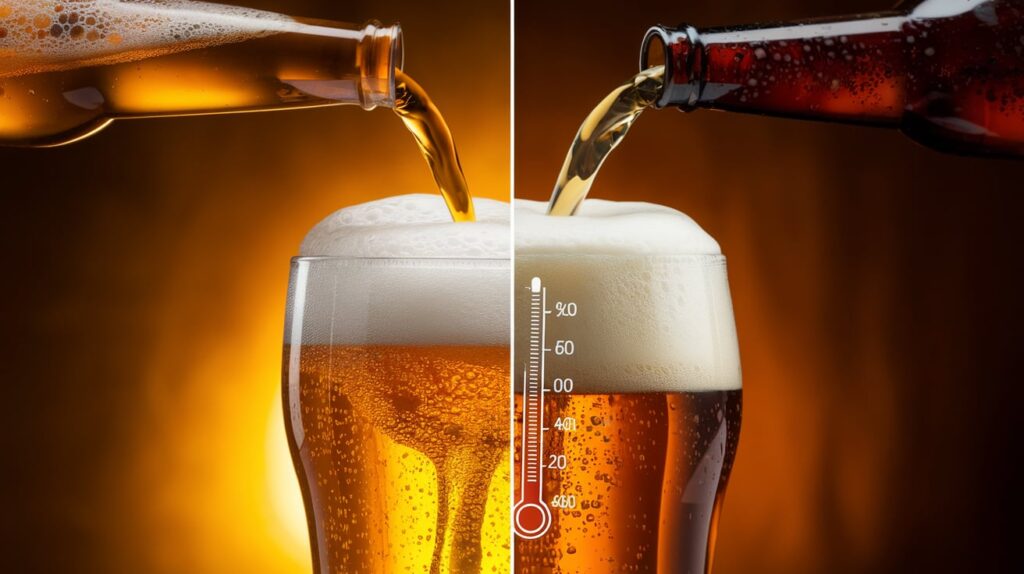
On the flip side, if the beer is too cold, it suppresses the flavors and aromas, muting the overall experience. A frosted glass might look cool, but it’s not doing your beer any favors. An overly cold beer glass can cause the beer to lose its carbonation more quickly and turn flat.
In short, beer is like Goldilocks: it needs to be just right. Too cold or too warm, and you’re missing out.
5. Glassware Actually Matters
You might think that glassware is just for snobs or beer nerds, but it turns out that the shape of your glass plays a role in achieving the perfect pour. Tall glasses like pilsner glasses help retain carbonation, while wide-mouthed glasses like pint glasses allow more room for the foam and help release aromas.
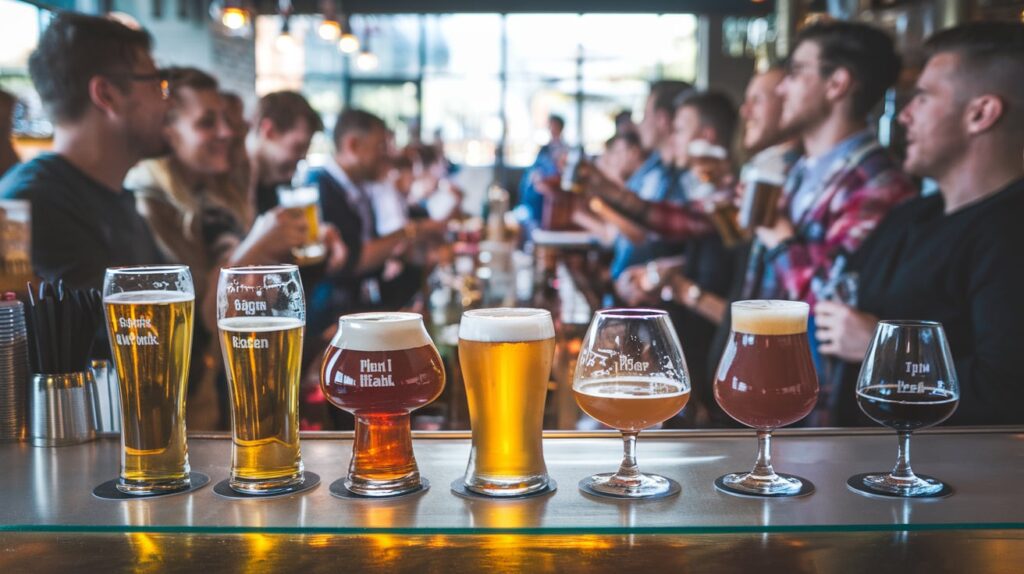
Ever wondered why beer snobs insist on those fancy tulip glasses? It’s not just for show. Tulip-shaped glasses are designed to trap aromas, making each sip more flavorful. Plus, they just look classy—and who doesn’t want to feel fancy while drinking?
6. Funny Failures: When the Perfect Pour Goes Wrong
Let’s face it: No one gets the perfect pour every time. We’ve all had those embarrassing moments where the foam overflows, spilling beer down our arms like we’re some kind of amateur. And then there’s the classic rookie mistake of tapping a keg for the first time—who hasn’t been sprayed with beer like a sticky firehose?

Imagine this: You’ve set up the perfect backyard party, bought a keg of the finest brew, and then, in front of all your friends, you attempt to tap it like a pro. Instead, the tap goes flying, and the keg starts spewing beer all over your lawn like it’s reenacting Old Faithful. Your friends are now soaked, and all you can do is laugh (while someone frantically tries to find the tap).
7. Don’t Forget: Clean Your Glass!
One more critical aspect of the perfect pour is your glass itself. A dirty glass—whether from soap residue, oils, or leftover lipstick—can wreak havoc on your pour. Residue can cause excessive foaming or even kill the carbonation, leaving you with a flat beer. And no one wants their beer to taste like the remnants of last night’s dish soap.
